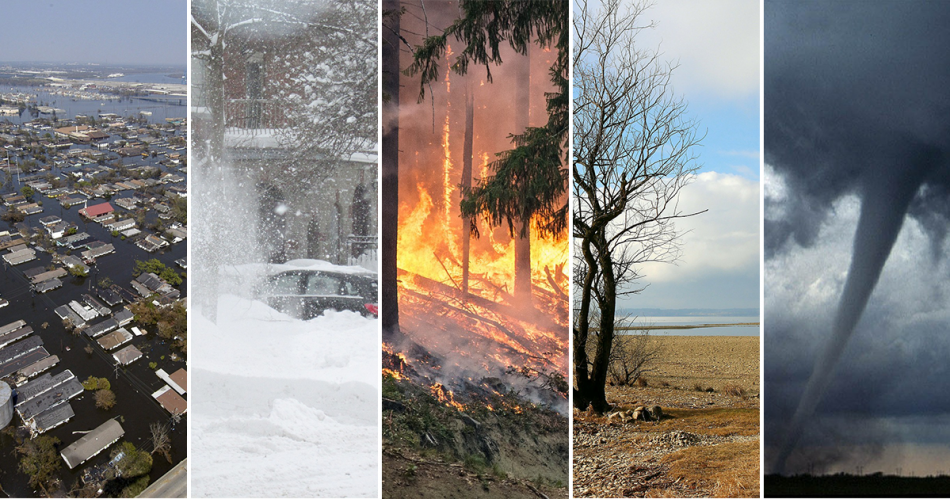If not for the pandemic, 2020 would likely be remembered as the year that climate change hit home. It simultaneously delivered the most active Atlantic hurricane season on record, with the most named storms in history, and the worst wildfire season ever, with a record-shattering 18 infernos of 100,000 acres or more across the west coast. These calamities should not be an afterthought in our reflections on this heartbreaking year and how to move forward in 2021.
The Northern Hemisphere’s land and ocean surface temperatures through August tied 2016 as the hottest since records began, which contributed to dry weather in the west and hyperactivity in the Atlantic. The zone where tropical storms can form continued to expand, with every mile of the Atlantic coast from Texas to Maine experiencing a tropical watch or warning in 2020. Inland areas were impacted as well, with tornadoes in the southeast and hurricane-force winds in the midwest.
I have spent my career responding to and anticipating natural disasters like these, both at FEMA and in the private sector. I’ve learned that no one is immune from climate-driven destruction, and also that no one is powerless against it.
This year’s disasters call for a two-pronged response — and collective action must be the hallmark of both.
First, we must pull the brake lever on climate change before it becomes a runaway train. President-elect Joe Biden can lead a new national movement by implementing a robust climate mitigation agenda, starting with rejoining the Paris Accords and overturning President Trump’s denial-fueled policies. This may not improve weather in the short term, but it can slow the acceleration of long-term trends.
The second course of action gets far less attention: as we fight against climate change, we must also adjust to its realities. This is known as climate adaptation, and this year showed why it matters. Too many communities and homeowners across the Atlantic coast continued to be caught off guard by the increasingly rapid development of storm systems, which can now intensify from a tropical storm to a major hurricane in an afternoon. Government and civic leaders must do more to foster readiness.
The task is most urgent in frequently battered areas, such as coastal Louisiana, which was slammed by a record-breaking five named storms this year. Louisiana and other Atlantic states can take a play from Alabama. In the wake of hurricanes Ivan and Katrina in 2004 and 2005, Alabama’s regulators adopted stronger codes; its homeowners demanded more resilient structures, and its builders met that demand with weather-resistant construction. When Hurricane Sally struck this year, residents of the more than 17,000 upgraded homes on Alabama’s coast bounced back quickly, even as neighboring buildings were reduced to rubble.
The same principle applies to frequently battered communities in the west. Families forced to relocate from areas like Paradise, California, in previous years were jeopardized by fire again this year. Fighting wildfire spread requires community-wide action because even one vulnerable building can cause an entire neighborhood to ignite. Homeowners can take simple actions like placing metal mesh over vents to block flying embers, installing fire resistant roofing, and clearing combustible materials around the home. State and local governments can spur changes by aligning building codes, tax incentives, and public investments around adaptation.
At the federal level, President-elect Biden must make climate adaptation a feature of his climate change agenda. This can include tax credits aimed at encouraging homeowners to perform fire and storm preparedness tasks, grants to help those in high-risk areas upgrade their homes, and higher resiliency standards for federally subsidized housing units. Simple acts of leadership, such as public messaging and civic engagement, can also go a long way toward spurring the collective action required to head-off future destruction.
In a year that continually outdid itself with bad news, the busiest hurricane and wildfire seasons in history are more than just a cherry on top. They are a portent of things to come. And they are a call to action for mitigating climate change and adapting to its realities. We are not helpless, and therefore should not be hopeless.
When the storms and fires return in 2021 — and we can be sure they will — we can and must be ready to face them.
*The writer is the former chief executive of FEMA’s National Flood Insurance Program and the current President and CEO of the Insurance Institute for Business & Home Safety.
(The Hill)
January 1, 2021
The viewpoints expressed by the authors do not necessarily reflect the opinions, viewpoints and editorial policies of Aequitas Review.


